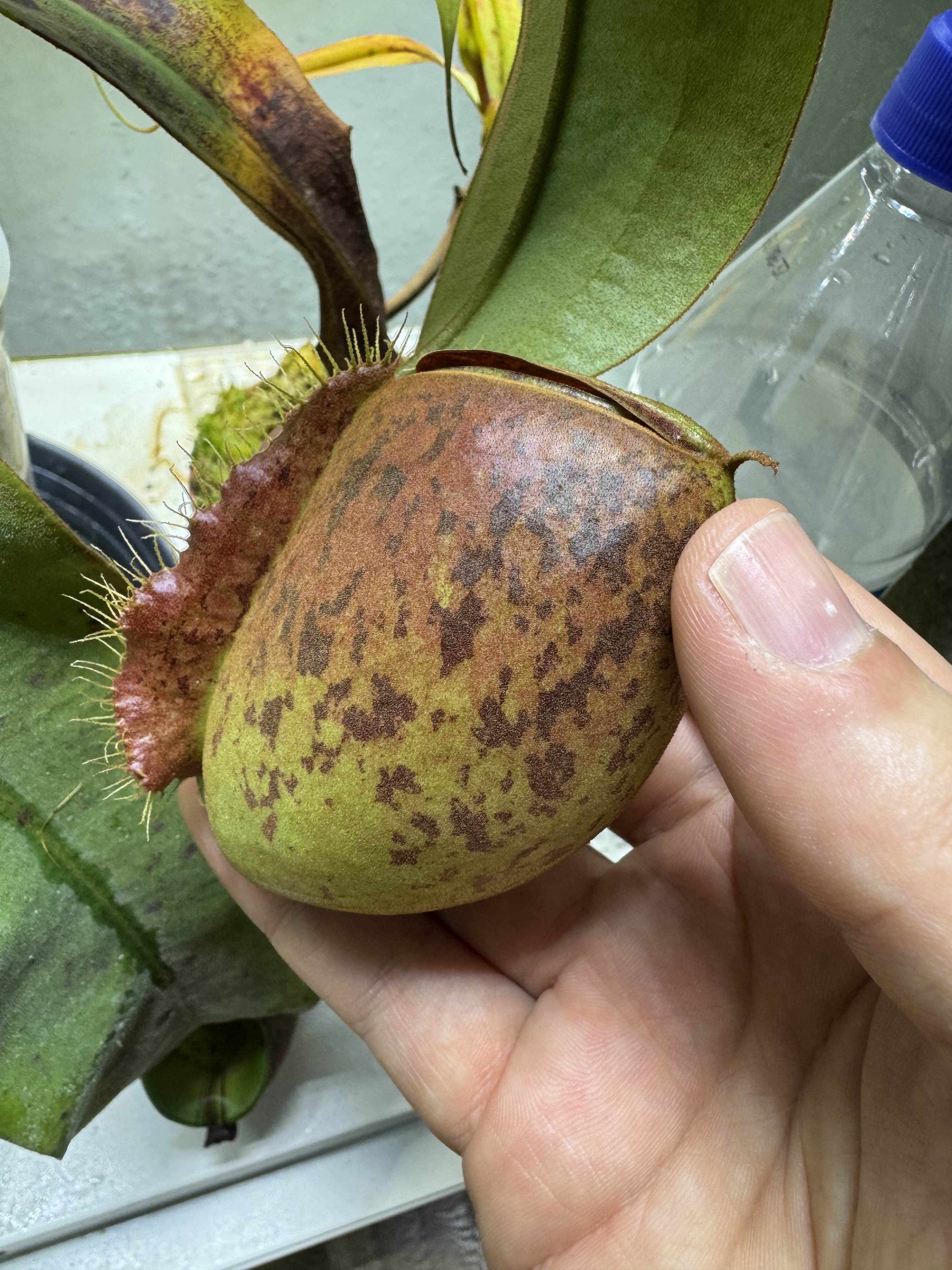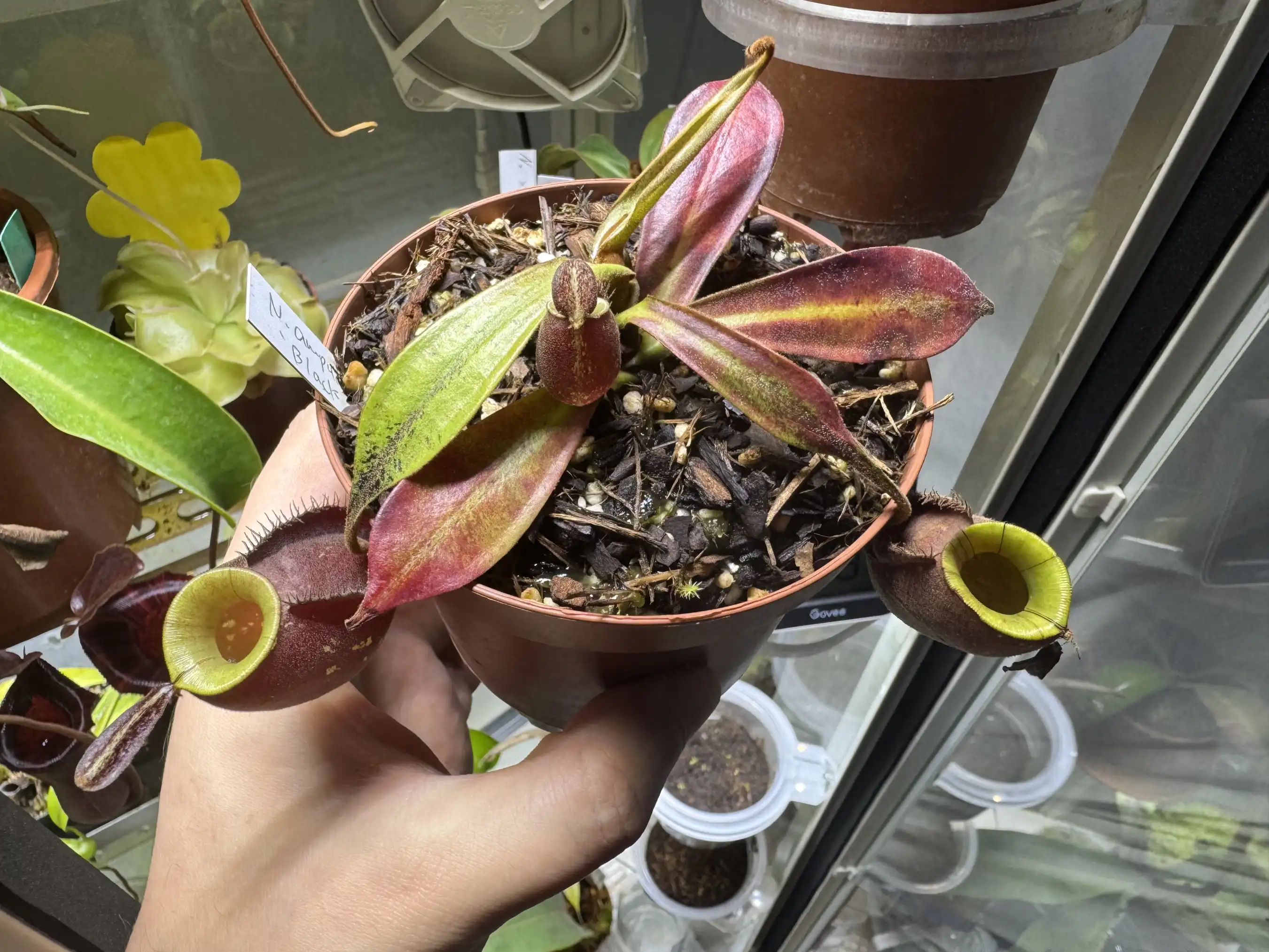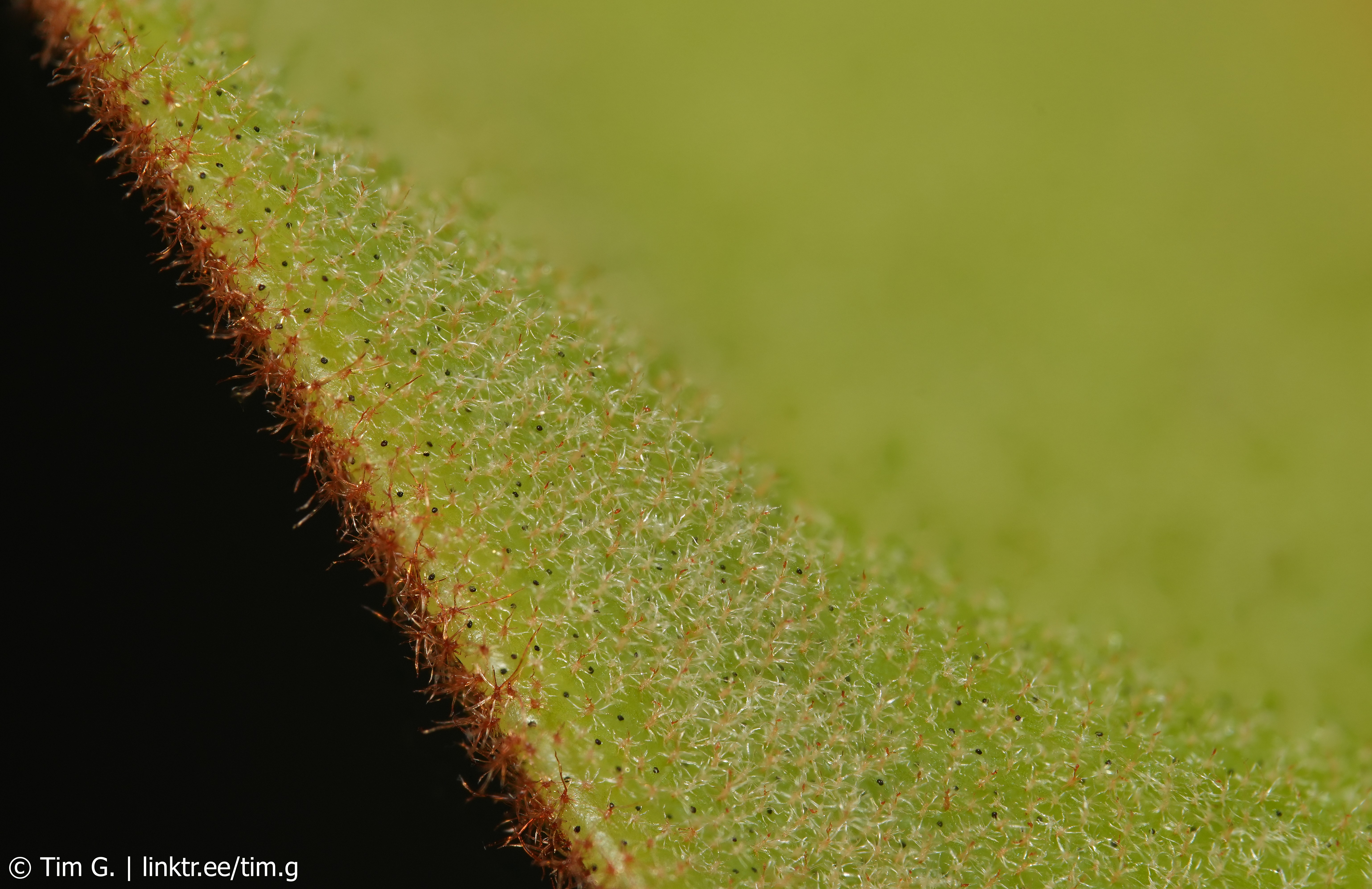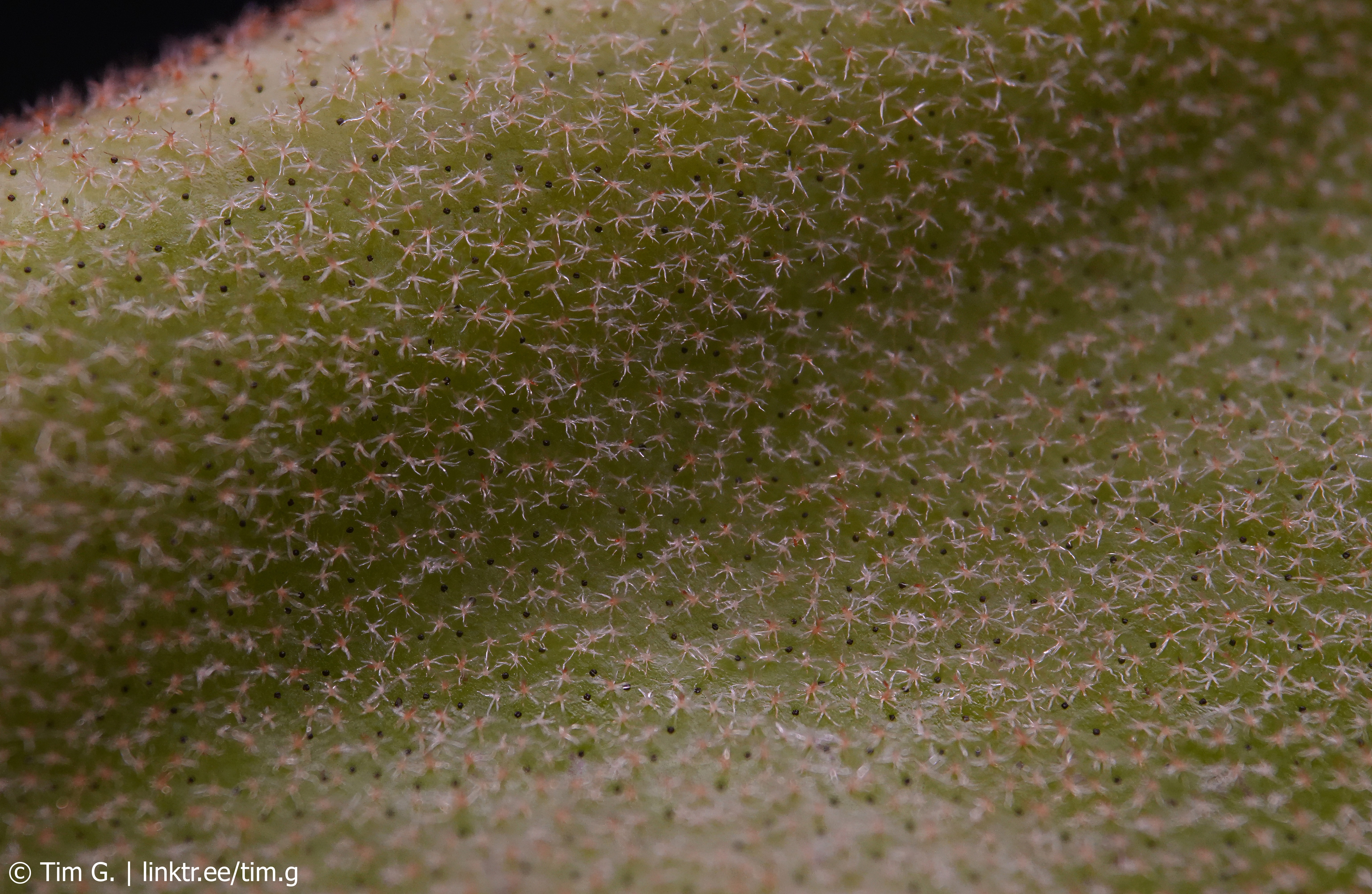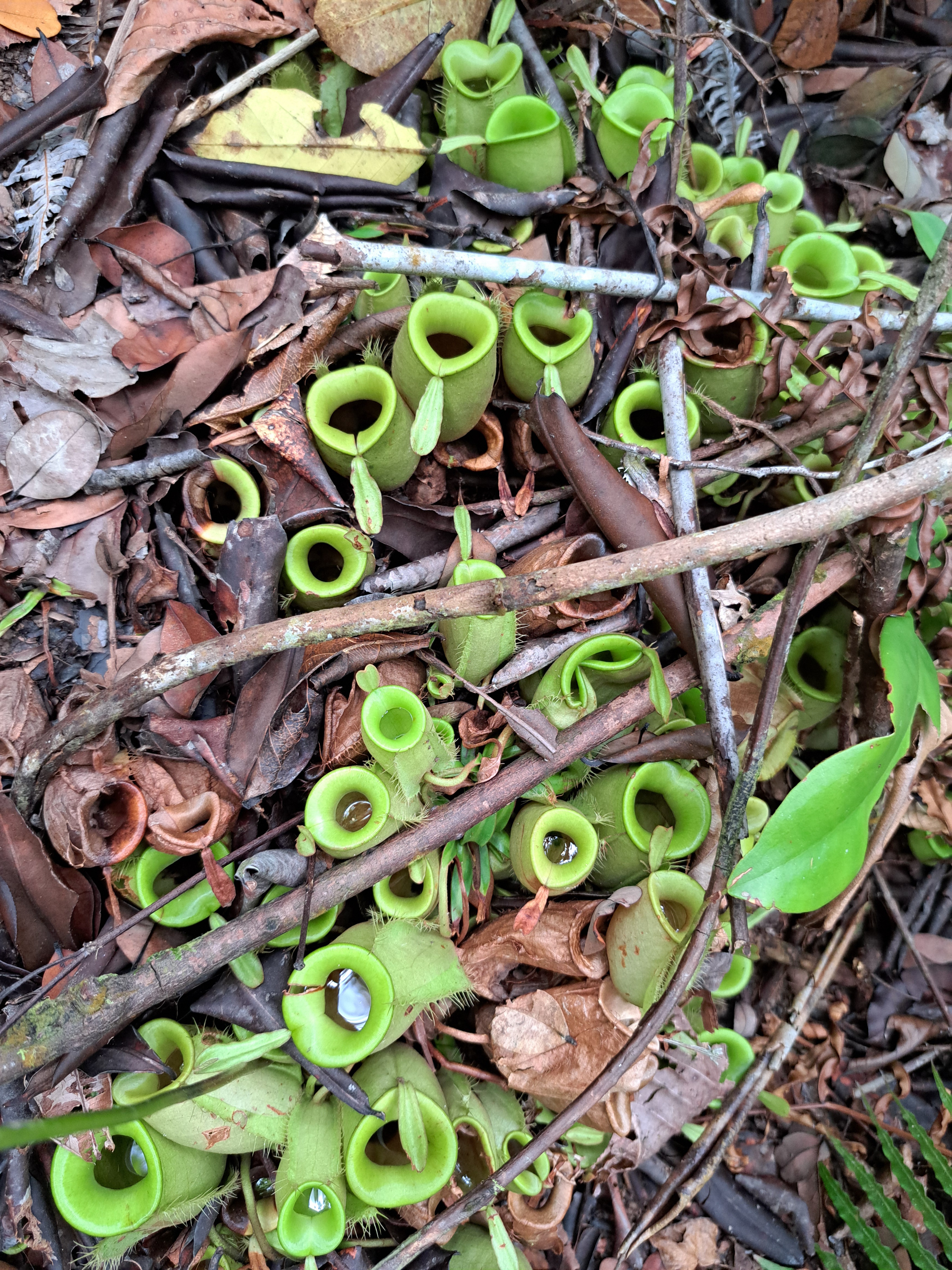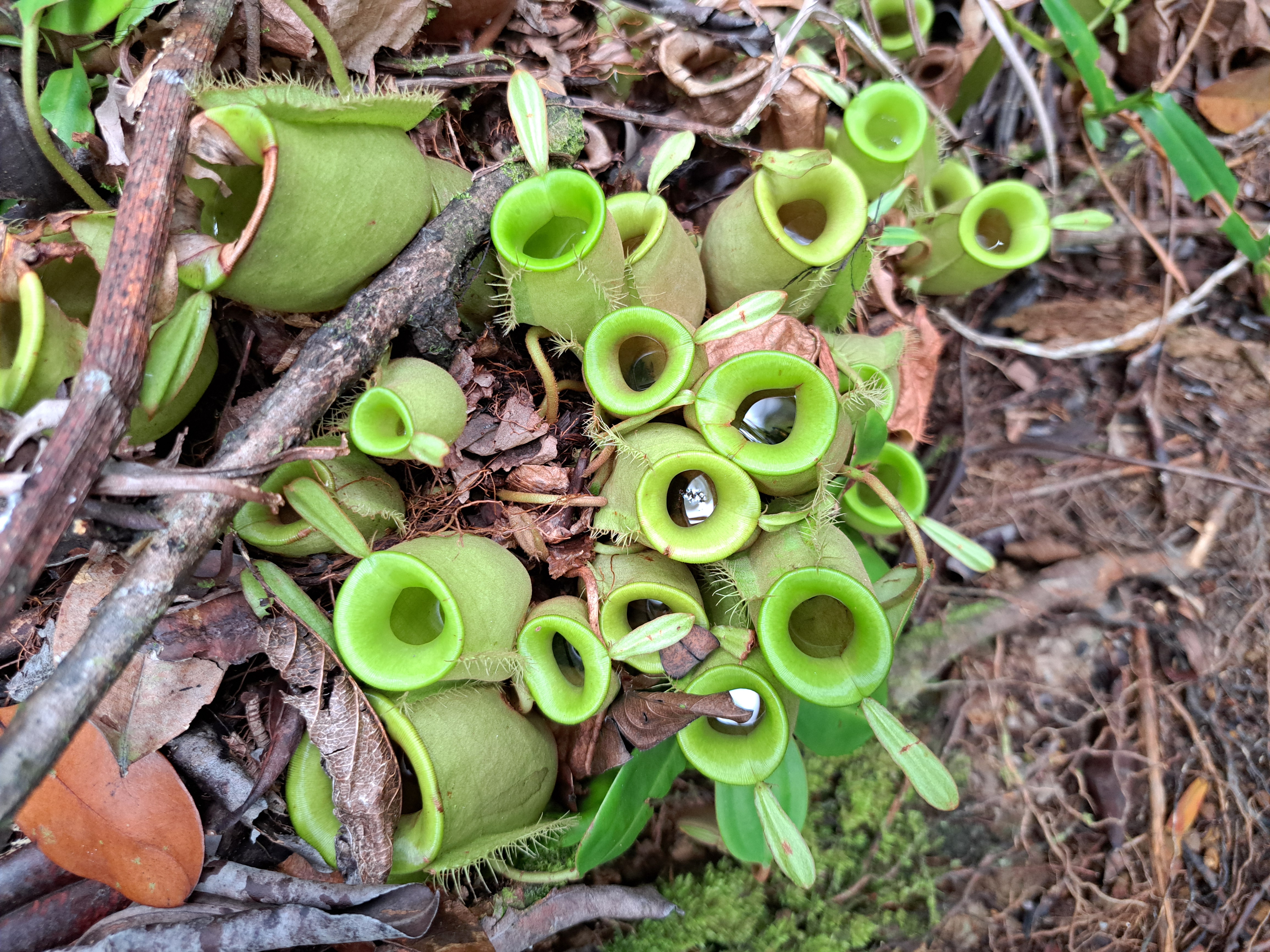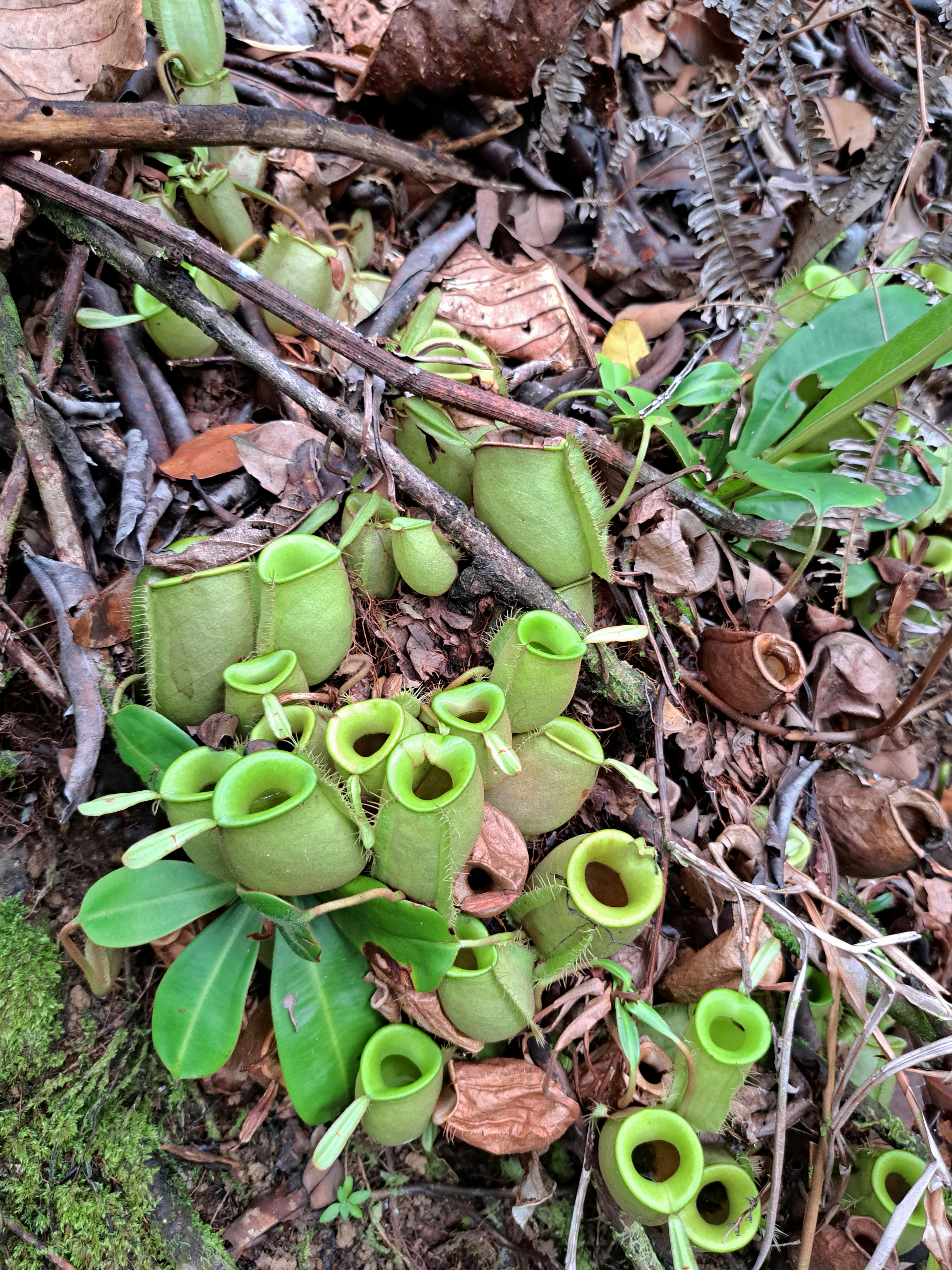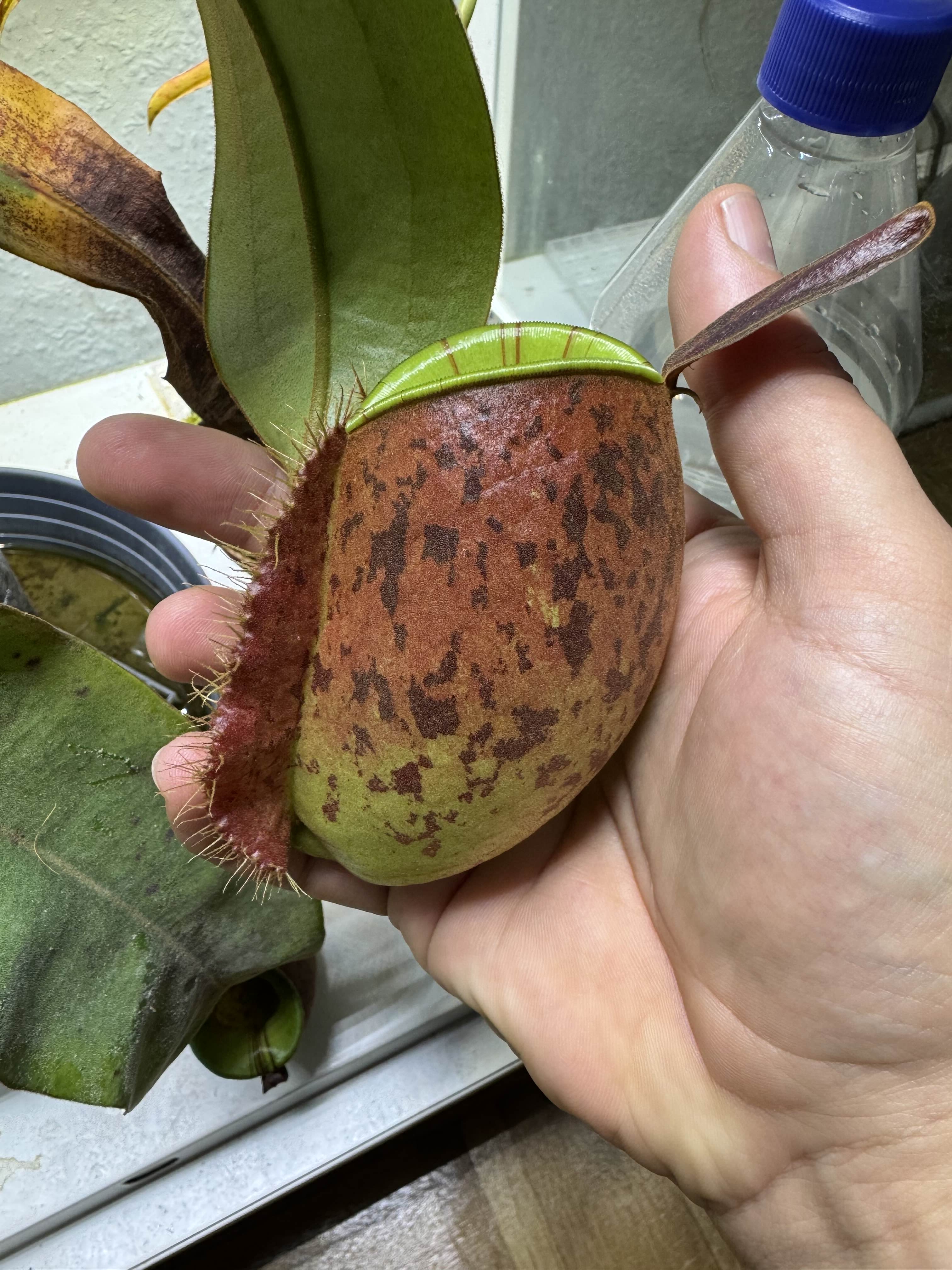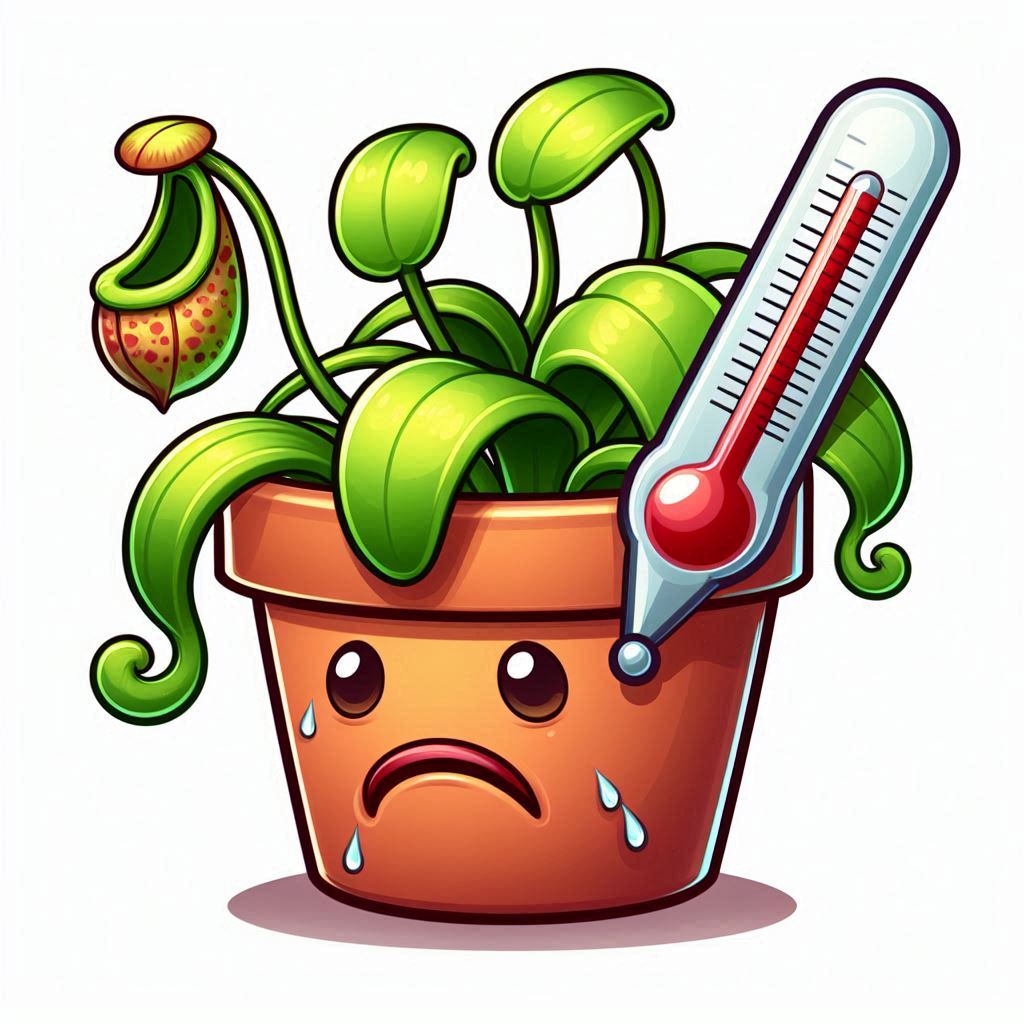Nepenthes ampullaria/en
| Nepenthes ampullaria | |
|---|---|
| Bild | 
|
| Familie | Kannenpflanzen (Nepenthaceae) |
| Gattung | Nepenthes |
| Klade | Urceolatae |
| Art | Nepenthes ampullaria
Jack |
| Verbreitung | Borneo, Sumatra, Malaysia, Thailand, Neuguinea, Molukken, Singapur |
| Klima | Tiefland bis Hochland |
| Platzbedarf | mittel |
| Wuchsform (Kultur) | kriechend bis kletternd |
| Toleranzbereich | mittel |
| Kannengröße (Kultur) | <10 cm |
Nepenthes ampullaria is a very widespread, rather climbing species, which is mainly found on the ground of tropical rainforests. It is found at altitudes from sea level to 2100 m above sea level. The distribution area covers a large part of the Southeast Asian island zone. Its unique characteristic is to produce carpets of pitchers on the ground which are formed from numerous basal shoots. These serve to collect all material coming from above. This includes insects as well as leaves and other organic material. Nepenthes ampullaria is therefore a detritivore. The lids of the pitchers are folded upwards or completely backwards. Sometimes even frogs (Microhyla nepenthicola) live in their pitchers and even their tadpoles grow in them.
The leaves of the basal shoots are usually so small that only the pitchers can be recognized in large numbers and not the leaves themselves. In favor of the basal shoots, however, upper pitchers are very rarely formed in nature as well as in cultivation. In general, the pitchers of Nepenthes ampullaria tend to be barrel-shaped or ovoid. Nepenthes ampullaria can quickly reach considerable sizes in cultivation. Individual leaves grow to around 25 cm long and 6 cm wide, but bend downwards slightly once they have fully unfolded and started to form pitchers. The approximate maximum diameter of the plant should therefore be around 50 cm. In relation to the leaf size, the cans formed are relatively small. A maximum height of approx. 10 cm and a width of 7 cm can be expected. The vast majority of Nepenthes ampullaria in cultivation originate from lowland or intermediate regions. This species tolerates a wide range of temperatures and humidity, whereby a constantly high humidity is strongly preferred. The minimum temperature at night should ideally not be below 15 °C, a temperature above 20 °C is desirable. Nepenthes ampullaria is a fairly readily available plant that is suitable even for beginners. There are also a large number of color variants and hybrids with Nepenthes ampullaria, which have adopted some of the characteristic features of the pitchers. The lids are always slightly wider and indicate hybridization, even if the pitcher shape is still reminiscent of a pure species.
1 Kultur
1.1 Optimale Bedingungen
- Temperatur
- Tag: 22 °C bis 35 °C
- Nacht: 20 °C bis 25 °C
- Toleranz: Die meisten Pflanzen in Kultur fühlen sich bei dauerhaft 20 °C bis 30 °C ziemlich wohl. Unter 15 °C sollten die Temperaturen Nachts nicht fallen
- Licht
- Nepenthes ampullaria wächst hauptsächlich am Boden von dicht bewachsenen Wäldern in Südostasien. Hierbei wird an einigen Standorten nur indirektes Licht auf die Pflanze durchgelassen. Sie verträgt aber auch höhere Lichtmengen meist gut und gedeiht damit schneller und kräftiger.
- Starke Lichtverbrennungen der Blätter zeigen sich oft durch direktes absterben einer betroffenen Blattstelle
- Lichtwert: zwischen 100-300 PPFD im Mittel, gemessen per iPhone15 Pro, Photone App mit Papierdiffusor
- Luftfeuchtigkeit
- Optimaler Rahmen: 80-100%
- Nepenthes ampullaria bevorzugt sehr hohe Luftfeuchtigkeiten. Auf den Blättern werden auch zum Verdunstungsschutz gut sichtbare kleine Härchen gebildet. Dieses Indumentum wird selbst durch leichte Berührung abgerieben und verliert damit seine Wirkung. Daher achtet man besser darauf dieses nicht zu entfernen damit die Pflanze auch bei etwas niedrigerer Luftfeuchte noch ausreichend Wasser aufnehmen kann.
1.2 Substrat & Düngung
- Welches Substrat eignet sich am besten?
- Als Substrat eignen sich vor allem Kokos-Chips oder Koko-Peat. Sphagnum-Perlite funktioniert auch gut. Die Pflanze bevorzugt ein eher sehr feuchtes Substrat
- Topfgröße
- Der Topf sollte eher groß gewählt werden, da Nepenthes ampullaria doch ein sehr ausladendes aber feines Wurzelwachstum hat, und daher bei zu kleinen Töpfen dazu neigen kann zu schnell zu trocken zu werden. Um häufiges umtopfen und Stress zu vermeiden sollte man daher gleich einen Topf größer wählen.
- Feuchtigkeit
- Nepenthes ampullaria mag es meist lieber auf der feuchteren Seite. in Natur ist sie im Boden des Dschungels zu finden welcher teilweise etwas versumpft ist.
- Angaben zu Substrat- und Kannendüngung
- Funktionierende Blattdüngung: 1x wöchentlich 350 µS Blattdüngung per Akerne Orchids RainMix
- Toleranz ggü. Düngung
- Relativ hohe Düngetoleranz über Substrat und Blätter. Die Kannen neigen eher dazu Kaputt zu gehen wenn die Düngung zu aggressiv ist.
1.3 Sonstige Besonderheiten
- Bildet Teppich aus Basaltrieben
- Sehr schnelles Wachstum bei hohen Temperaturen
- Hochkannen sind äußerst selten
- Ist in sehr vielen Farbvarianten erhältlich
2 Galerie
2.1 Allgemeine Bilder
-
Kanne von Nepenthes ampullaria BE3390 "Lime Twist"
-
Nepenthes ampullaria "Black Miracle"
-
Indumentum auf der Blattoberseite
-
Indumentum Macro Blattoberseite & Blattrand
-
Indumentum Macro Blattoberseite
-
Nepenthes ampullaria (Santubong)
-
Nepenthes ampullaria (Santubong)
-
Nepenthes ampullaria (Santubong)
-
Nepenthes ampullaria speckled (Kinabatangan)
2.2 Konkrete Kulturbeispiele
| Bild | Bedingungen | Kultiviert von |
|---|---|---|
|
|
Kevin |
3 Kulturfehler, Krankheiten & Schädlinge
3.1 Häufige Probleme:
3.2 Spezifisches Schadbild
Beschreibung: &&&
Ursache: &&&&
Lösung: &&&&
-
Problemfoto
-
Hier weiteres Problemfoto
Bisher keine spezifischen Schadbilder/Probleme bekannt.
3.3 Weblinks
- Wikipedia - Nepenthes ampullaria
- Nepenthes ampullaria auf iNaturalist.org
- Weitere Arten von Nepenthes auf Carnipedia
